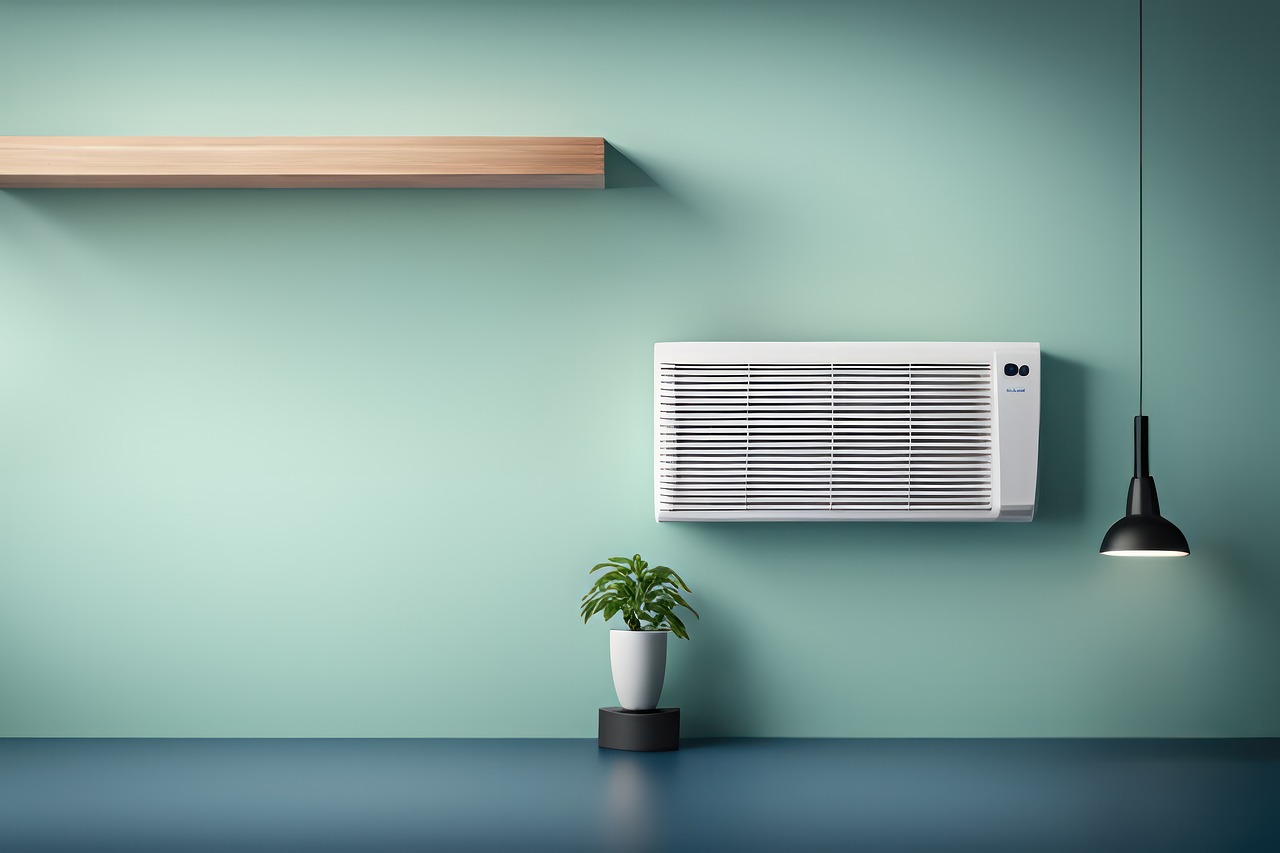Table of Contents
- When we think about hygiene, we often focus on visible cleanliness – washing our hands, cleaning surfaces and maintaining personal hygiene. However, there’s a critical aspect of hygiene that’s often overlooked but has a profound impact on our health and well-being
- The Unseen Threats
- Indoor Air Pollution
- Infectious Microorganisms
- Dust Mites
- Mold Growth
- The Impact on Health
- Respiratory Problems
- Reduced Productivity
- Allergies and Skin Conditions
- Vulnerable Populations
- Air Purification
- Regular Cleaning
- Humidity Control
- Hand Hygiene
- Professional Inspections
- Education and Awareness
When we think about hygiene, we often focus on visible cleanliness – washing our hands, cleaning surfaces and maintaining personal hygiene. However, there’s a critical aspect of hygiene that’s often overlooked but has a profound impact on our health and well-being
clean environments and indoor air quality. In this article, we will delve into the significance of invisible hygiene, emphasizing the importance of clean surroundings and the air we breathe.
Clean environments and indoor air quality are often overlooked aspects of hygiene that have a profound impact on our health and well-being. In this article, we will delve deep into the concept of invisible hygiene, shedding light on why it’s crucial to prioritize clean surroundings and ensure the air we breathe is of the highest quality. Here’s a more comprehensive exploration of the significance of invisible hygiene:
Air Quality Matters: The air we breathe is fundamental to our existence and its quality significantly influences our health. Poor indoor air quality can lead to various health issues, including respiratory problems, allergies and even long-term conditions such as asthma. By paying attention to the quality of the air in our homes and workplaces, we can proactively safeguard our respiratory health.
Allergen Control: Many indoor environments harbor allergens like dust mites, pollen, pet dander and mold spores. These allergens can trigger allergies and exacerbate existing respiratory conditions. Maintaining clean surroundings and using air purifiers can help reduce allergen levels, creating a healthier indoor environment.
Disease Prevention: Clean environments are essential for disease prevention. Harmful pathogens and viruses can thrive in dirty or poorly ventilated spaces. Regular cleaning, disinfection and proper ventilation can help mitigate the risk of infections and the spread of illnesses.
Mental Well-being: The cleanliness of our surroundings can have a significant impact on our mental well-being. A cluttered or dirty environment can contribute to stress and feelings of unease. On the other hand, a clean and organized space promotes a sense of calm and can enhance productivity and focus.
Respiratory Health: Airborne pollutants such as dust, volatile organic compounds (VOCs) and particulate matter can have adverse effects on our respiratory health. Invisible hygiene includes measures like using air purifiers, maintaining HVAC systems and avoiding the use of harmful chemicals indoors to minimize exposure to these pollutants.
Productivity and Comfort: Clean environments promote productivity and comfort. In workplaces, employees are more likely to perform at their best when they are in a clean and pleasant environment. This extends to homes as well, where clean spaces contribute to relaxation and overall well-being.
Long-term Health Benefits: Prioritizing invisible hygiene can yield long-term health benefits. By reducing exposure to pollutants and maintaining clean indoor spaces, you can potentially lower the risk of chronic respiratory conditions and other health issues that may develop over time.
Environmental Impact: Invisible hygiene isn’t just about indoor spaces; it also has an environmental dimension. Sustainable cleaning practices and reducing energy consumption can contribute to a greener planet. This means choosing eco-friendly cleaning products, reducing waste and optimizing energy-efficient ventilation systems.
Peace of Mind: Knowing that your indoor environment is clean and that the air you breathe is of good quality provides peace of mind. It eliminates concerns about hidden health risks and allows you to focus on other aspects of your life with confidence.
Holistic Approach: Invisible hygiene is part of a holistic approach to health and well-being. It complements personal hygiene practices by ensuring that the environment we inhabit supports our overall health goals.
In conclusion, invisible hygiene is a vital component of a healthy lifestyle. Clean surroundings and good indoor air quality are integral to our well-being, impacting our physical and mental health, disease prevention and long-term quality of life. By recognizing the significance of invisible hygiene and taking proactive steps to maintain clean environments and high indoor air quality, we can enjoy healthier, happier lives.
Don’t stop here; you can continue your exploration by following this link for more details: Preventing Health Care–Associated Infections – Patient Safety and …

The Unseen Threats
Invisible hygiene is all about addressing the hidden threats in our living and working spaces. These threats are not immediately visible, but their effects can be substantial:
“Invisible hygiene is an emerging concept that emphasizes the importance of addressing concealed threats within our living and working environments. These threats may elude the naked eye, but their potential impact on our health, well-being and overall quality of life should not be underestimated. Let’s delve deeper into the significance of understanding and managing these hidden factors:
Indoor Air Quality: One of the most critical aspects of invisible hygiene is indoor air quality. The air we breathe indoors can contain pollutants, allergens and even toxins that are not visible to us. These contaminants can stem from various sources, including mold, pet dander, volatile organic compounds (VOCs) from furnishings and pollutants from cooking or heating. Poor indoor air quality has been linked to respiratory issues, allergies and even more severe health problems over time.
Microbial Menace: Microorganisms such as bacteria, viruses and fungi can silently thrive in our living and working spaces. These unseen agents can lead to illnesses and infections when they multiply to harmful levels. Proper cleaning and disinfection practices are essential to maintain invisible hygiene and reduce the risk of infections.
Hidden Allergens: Allergens like dust mites, pollen and microscopic particles can trigger allergies and respiratory problems, even if we can’t see them with the naked eye. Regular cleaning, proper ventilation and the use of air purifiers can help mitigate these hidden allergens.
Water Quality: The quality of our tap water can be compromised by contaminants that are invisible to us. Heavy metals, chemicals and microbial contaminants can pose health risks. Regular water testing and the use of filtration systems can help ensure the safety of your drinking water.
Electromagnetic Radiation: In today’s digital age, electromagnetic radiation from electronic devices and Wi-Fi networks is a hidden concern. While the effects of long-term exposure are still a subject of study, minimizing unnecessary exposure and creating EMF-safe spaces at home and work is becoming increasingly important.
Chemical Exposure: Everyday household and workplace products can release invisible chemical compounds into the air, contributing to indoor air pollution. Understanding and reducing exposure to these chemicals through the use of eco-friendly products and proper ventilation is key to invisible hygiene.
Mental and Emotional Factors: Invisible hygiene is not limited to physical threats. It also encompasses factors like stress, anxiety and the impact of our living environments on our mental and emotional well-being. Creating spaces that promote relaxation, focus and positive emotions is a vital aspect of invisible hygiene.
Incorporating invisible hygiene practices into our daily lives involves being proactive, informed and mindful of the hidden threats that surround us. It’s about making conscious choices to create spaces that support our physical health, emotional well-being and overall quality of life. By addressing these invisible factors, we can enhance our living and working environments to promote better health and happiness for ourselves and those around us.”
Should you desire more in-depth information, it’s available for your perusal on this page: Environmental Impact: Concept, Consequences, Measurement – PMC

Indoor Air Pollution
Indoor air can be more polluted than outdoor air, with contaminants such as dust, allergens, pet dander, mold spores and volatile organic compounds (VOCs) from household products. Prolonged exposure can lead to respiratory problems and exacerbate allergies.
Understanding the potential hazards of indoor air pollution is crucial for maintaining a healthy living environment. Beyond the mentioned contaminants, indoor air quality can be influenced by various factors and its impact on our health is worth exploring in more detail:
Ventilation Matters: Proper ventilation is key to maintaining good indoor air quality. Ensuring that your home is adequately ventilated can help reduce the concentration of pollutants. Opening windows, using exhaust fans and investing in air purifiers with HEPA filters are effective ways to improve ventilation.
Health Implications: Prolonged exposure to indoor air pollutants can have serious health implications. It can exacerbate existing respiratory conditions like asthma and allergies, leading to more frequent symptoms and potentially severe attacks. Additionally, it can increase the risk of developing respiratory issues in otherwise healthy individuals.
Children and Vulnerable Populations: Children, the elderly and individuals with compromised immune systems are particularly vulnerable to the effects of indoor air pollution. For children, exposure to pollutants during critical developmental stages can have long-term health consequences.
Volatile Organic Compounds (VOCs): VOCs are chemicals emitted by various household products, including paints, cleaning supplies and furniture. These compounds can contribute to indoor air pollution and have been linked to respiratory irritation, headaches and even more severe health problems with prolonged exposure.
Mold and Allergens: Mold spores and allergens from dust mites and pet dander are common indoor pollutants. Mold can release mycotoxins, which can be harmful when inhaled. Allergens can trigger allergies and asthma symptoms in susceptible individuals.
Radon and Asbestos: In some homes, naturally occurring gases like radon and asbestos-containing materials can pose serious health risks. Radon is a radioactive gas that can accumulate in enclosed spaces, while asbestos fibers, when disturbed, can become airborne and cause respiratory diseases.
Carbon Monoxide (CO): Carbon monoxide is a colorless, odorless gas produced by incomplete combustion of fuel-burning appliances like stoves and heaters. It can be life-threatening if not detected promptly. Installing carbon monoxide detectors in your home is crucial for safety.
Regular Maintenance: Regularly maintaining your HVAC systems, including changing filters, cleaning ducts and servicing furnaces and air conditioners, can significantly improve indoor air quality. A well-maintained system is more efficient at filtering out pollutants.
Air Purifiers: Consider using air purifiers with HEPA filters to capture airborne particles and pollutants. These devices can be particularly beneficial for those with allergies or respiratory conditions.
Humidity Control: Maintaining proper humidity levels in your home can help prevent mold growth. Using dehumidifiers in damp areas and ensuring good airflow can reduce moisture buildup.
Green Cleaning Products: Opt for environmentally friendly, low-VOC or VOC-free cleaning products to reduce indoor air pollution from chemical cleaners.
Regular Cleaning: Frequent cleaning, dusting and vacuuming with a HEPA filter-equipped vacuum cleaner can minimize the buildup of dust and allergens in your home.
In conclusion, recognizing the potential hazards of indoor air pollution is the first step toward maintaining a healthy living space. Proper ventilation, regular maintenance and the use of air purifiers and eco-friendly products can significantly improve indoor air quality. By taking these measures, you can reduce the risk of respiratory problems, allergies and other health issues associated with poor indoor air quality, creating a safer and more comfortable home environment for you and your family.
Additionally, you can find further information on this topic by visiting this page: Why cleaning the invisible in restaurants is important during COVID …

Infectious Microorganisms
Bacteria, viruses and fungi can lurk in the air and on surfaces. Poor indoor hygiene can lead to the spread of diseases, especially in shared spaces like offices and schools.
The importance of indoor hygiene cannot be overstated, as it directly impacts our health and well-being. Here’s an in-depth look at why maintaining good indoor hygiene is crucial, particularly in shared spaces:
1. Disease Prevention: Indoor spaces, especially those shared by multiple individuals, can become breeding grounds for bacteria, viruses and fungi. Proper indoor hygiene measures, such as regular cleaning and disinfection, are essential to prevent the spread of diseases. This is particularly important in environments like offices, schools and healthcare facilities, where people often come into close contact.
2. Air Quality: Indoor air quality can significantly affect our respiratory health. Poor indoor hygiene, including inadequate ventilation and the presence of pollutants like dust, allergens and mold, can lead to indoor air pollution. Prolonged exposure to such conditions can exacerbate respiratory conditions like asthma and allergies.
3. Allergen Control: Indoor spaces can harbor allergens such as dust mites, pet dander and pollen. Maintaining good indoor hygiene through regular cleaning and air filtration can help reduce allergen exposure, making indoor environments safer and more comfortable for those with allergies or respiratory sensitivities.
4. Workplace Productivity: In office settings, maintaining cleanliness and hygiene can directly impact workplace productivity. A clean and organized workspace fosters concentration and efficiency, while a cluttered and dirty environment can lead to distractions and reduced productivity.
5. Mental Well-being: The state of our surroundings can have a significant impact on our mental well-being. Clean and tidy indoor spaces contribute to a sense of order and tranquility. In contrast, chaotic or dirty environments can increase stress and anxiety.
6. Prevention of Infections: Shared spaces like schools are often hotspots for the transmission of infections. Children and adolescents, who may have less developed hygiene habits, are particularly susceptible. Proper handwashing, surface disinfection and other hygiene practices can help reduce the risk of outbreaks.
7. Long-Term Health: The benefits of good indoor hygiene extend beyond immediate disease prevention. Over the long term, maintaining clean and hygienic indoor spaces can contribute to better overall health, fewer sick days and reduced healthcare costs.
8. Hygiene Education: Teaching proper hygiene practices in shared spaces, especially in educational settings, instills good habits in individuals from a young age. These habits can carry over into adulthood and contribute to a healthier society as a whole.
9. Environmental Health: Indoor hygiene also has an impact on the environment. Responsible use of cleaning products, recycling and energy-efficient practices in shared spaces can contribute to sustainability efforts and a reduced carbon footprint.
10. Reputation and Image: For businesses and organizations, maintaining good indoor hygiene is not only a matter of health but also reputation. Clean and well-kept premises project a positive image to clients, customers and visitors.
In conclusion, poor indoor hygiene can have far-reaching consequences for health, well-being and productivity, particularly in shared spaces. By prioritizing cleanliness, proper ventilation and hygiene education, we can create indoor environments that promote health, safety and overall quality of life for everyone who uses them.
For additional details, consider exploring the related content available here Multimodal environmental cleaning strategies to prevent healthcare …

Dust Mites
These microscopic creatures thrive in dust and bedding. They are a common allergen and can trigger asthma and allergic reactions.
Delving into the world of dust mites reveals a fascinating and potentially concerning aspect of our indoor environment. Let’s explore these microscopic creatures further, their habitats and the health implications they carry:
1. Ubiquitous Residents: Dust mites are tiny arthropods that belong to the spider family. They are pervasive and can be found in most homes worldwide. In fact, it’s estimated that millions of these creatures may inhabit the average household.
2. Preferred Habitats: Dust mites have a particular affinity for certain environments within our homes. They thrive in warm, humid conditions, making bedding, mattresses, pillows and upholstered furniture their primary homes. These areas provide the ideal combination of temperature and moisture for their survival.
3. Allergenic Potential: While dust mites themselves are harmless, their waste products, including feces and shed skin particles, are potent allergens. When these particles become airborne or are disturbed during activities like making the bed or fluffing pillows, they can trigger allergic reactions in sensitive individuals.
4. Common Allergen: Dust mite allergens are among the most common indoor allergens. Exposure to these allergens can lead to a range of allergic reactions, including sneezing, runny or stuffy nose, itchy or watery eyes, coughing and skin rashes. In individuals with asthma, dust mites can exacerbate symptoms and lead to asthma attacks.
5. Impact on Asthma: Dust mites are a well-known asthma trigger. For individuals with asthma, exposure to dust mite allergens can inflame the airways, making it difficult to breathe. This can result in wheezing, chest tightness and coughing. Proper management of dust mite allergens is essential for asthma control.
6. Preventive Measures: To mitigate the impact of dust mites on health, several preventive measures can be taken. These include using allergen-proof mattress and pillow covers, washing bedding in hot water regularly, maintaining a humidity level below 50% and frequently vacuuming carpets and upholstery with a HEPA-filtered vacuum cleaner.
7. Allergy Testing: If dust mite allergies are suspected, allergy testing can help confirm the diagnosis. Skin prick tests or blood tests can identify specific allergens that trigger allergic reactions. Once identified, allergen avoidance strategies can be tailored to the individual.
8. Ongoing Management: Managing dust mite allergies is typically an ongoing process. It involves maintaining a clean and allergen-reduced living environment, using prescribed medications (e.g., antihistamines or asthma inhalers) and working closely with healthcare professionals to monitor and manage symptoms effectively.
In conclusion, dust mites are microscopic creatures that are nearly ubiquitous in our indoor environments. While they themselves are harmless, their waste products can trigger allergies and asthma in sensitive individuals. Understanding their preferred habitats, allergenic potential and preventive measures is crucial for those seeking to minimize their impact on health. By implementing effective dust mite control strategies, individuals can create a healthier and more comfortable indoor environment.
If you’d like to dive deeper into this subject, there’s more to discover on this page: The Inside Story: A Guide to Indoor Air Quality | US EPA

Mold Growth
High humidity levels and moisture can lead to mold growth, which releases spores into the air. Mold can cause allergies and respiratory issues, particularly in individuals with compromised immune systems.
Understanding the potential health risks associated with mold growth due to high humidity and moisture is crucial for creating a safe and comfortable living environment. Let’s explore this idea further and delve into ways to prevent and address mold-related concerns:
1. Mold Allergies: Mold spores released into the air can be a common allergen, triggering symptoms like sneezing, coughing, itchy or watery eyes and congestion. Individuals with mold allergies may experience discomfort, especially during seasons with high humidity or after exposure to damp environments.
2. Respiratory Issues: Prolonged exposure to mold can exacerbate respiratory conditions such as asthma or bronchitis. Mold spores can irritate the respiratory tract and airways, leading to symptoms like wheezing, shortness of breath and chest tightness. For those with compromised immune systems, such as the elderly or individuals with pre-existing respiratory conditions, mold exposure can pose significant health risks.
3. Vulnerable Populations: Infants, young children, the elderly, pregnant women and individuals with weakened immune systems are particularly vulnerable to the health effects of mold. It’s essential to take extra precautions in households with members from these groups.
4. Prevention: Preventing mold growth starts with moisture control. Ensure proper ventilation in areas prone to humidity, such as bathrooms and kitchens. Use exhaust fans, open windows when weather permits and consider using dehumidifiers to maintain optimal indoor humidity levels (usually between 30% to 50%).
5. Regular Inspection: Periodically inspect your home for signs of mold, especially in areas with a history of moisture problems. Pay attention to damp basements, leaky roofs and areas around plumbing fixtures. Promptly address any water leaks or water damage to prevent mold from taking hold.
6. Proper Ventilation: Properly ventilate your home to ensure air circulation. Use exhaust fans during and after activities that generate moisture, like showering or cooking. Ensure that your HVAC system is well-maintained, including changing filters regularly.
7. Cleaning: Regularly clean and disinfect areas prone to moisture and mold, such as bathrooms and kitchens. Use mold-resistant paints or coatings in susceptible areas. When cleaning, use appropriate protective gear, including gloves and masks, especially if you suspect extensive mold growth.
8. Professional Help: If you discover a significant mold problem, consider seeking professional assistance. Mold remediation experts can safely and effectively remove mold and address the root causes of moisture buildup.
9. Health Consultation: If you or your family members experience persistent allergy or respiratory symptoms that you suspect are related to mold, consult a healthcare professional. They can provide guidance on managing symptoms and may recommend allergy testing or further evaluation.
10. Stay Informed: Stay informed about mold prevention and mitigation strategies. Knowledge is your best defense against mold-related health issues.
In summary, understanding the health risks associated with mold growth due to high humidity and moisture is essential for safeguarding your well-being. By taking proactive measures to control moisture levels, inspecting for mold and addressing any issues promptly, you can create a healthier and safer living environment for you and your loved ones. Prioritizing mold prevention is an investment in the long-term health and comfort of your home.
Looking for more insights? You’ll find them right here in our extended coverage: A Brief Guide to Mold, Moisture and Your Home | US EPA

The Impact on Health
Ignoring invisible hygiene can have severe consequences for our health:
Ignoring invisible hygiene, the often-overlooked aspect of cleanliness, can have severe consequences for our health. While we tend to focus on what we can see and touch, such as visibly dirty surfaces or unclean hands, it’s essential to recognize that the invisible world of germs and microorganisms plays a significant role in our well-being.
Microbial Threats: Germs like bacteria and viruses are microscopic, making them invisible to the naked eye. Neglecting to sanitize surfaces, objects or our hands can lead to the proliferation of these harmful microorganisms. This can result in infections, illnesses or even outbreaks of diseases that may have far-reaching consequences.
Indoor Air Quality: Indoor spaces can harbor invisible pollutants, such as allergens, dust mites and mold spores. Poor indoor air quality can exacerbate respiratory issues like allergies and asthma. Regular cleaning and maintenance, including air filtration and ventilation, are essential for reducing these unseen health risks.
Personal Hygiene: Sometimes, the lack of attention to personal hygiene practices, such as handwashing, can have invisible yet significant repercussions. Germs that we pick up throughout the day can linger on our skin, potentially leading to infections when we touch our face or consume food.
Food Safety: Invisible contaminants in food can pose severe health risks. Bacteria like Salmonella and E. coli can’t be seen, but they can cause foodborne illnesses when proper food handling and cooking techniques are not followed.
Long-Term Health: Ignoring invisible hygiene isn’t just about immediate health risks. It can have long-term consequences. For example, poor dental hygiene may not result in immediate visible effects, but it can lead to cavities, gum disease and other oral health issues over time.
In conclusion, invisible hygiene is as crucial as visible cleanliness when it comes to safeguarding our health. By recognizing the hidden threats and taking proactive measures, such as regular cleaning, proper sanitation and personal hygiene practices, we can protect ourselves from the unseen dangers that may compromise our well-being. Prioritizing both visible and invisible hygiene ensures a comprehensive approach to health and safety in our daily lives.
If you’d like to dive deeper into this subject, there’s more to discover on this page: Why cleaning the invisible in restaurants is important during COVID …

Respiratory Problems
Poor air quality can lead to respiratory issues like asthma, bronchitis and allergies. Individuals with pre-existing respiratory conditions are particularly vulnerable.
The quality of the air we breathe has a profound impact on our respiratory health and the consequences of poor air quality extend beyond what meets the eye. Here’s an extended look at how subpar air quality can affect our respiratory well-being and why individuals with pre-existing conditions need to take extra precautions:
1. Widespread Health Implications: Poor air quality isn’t just a minor inconvenience; it can be a major health concern. Particulate matter, pollutants and airborne irritants can trigger a range of respiratory issues, from mild discomfort to severe health complications.
2. Asthma Aggravation: For individuals with asthma, poor air quality is a potent trigger. Pollutants and allergens in the air can provoke asthma symptoms like wheezing, coughing, shortness of breath and chest tightness. Regular exposure to polluted air can worsen asthma control and lead to more frequent attacks.
3. Increased Risk of Bronchitis: Prolonged exposure to air pollutants can irritate the bronchial tubes and lead to acute bronchitis, characterized by persistent coughing, mucus production and chest discomfort. Those with pre-existing respiratory conditions may be at an elevated risk.
4. Allergies Amplified: Poor air quality often includes higher levels of allergens like pollen, mold spores and dust mites. This can intensify allergy symptoms, causing sneezing, runny noses, itchy eyes and congestion. For individuals with allergies, these heightened symptoms can be particularly bothersome.
5. Vulnerable Populations: Individuals with pre-existing respiratory conditions, such as chronic obstructive pulmonary disease (COPD), interstitial lung disease or cystic fibrosis, are especially vulnerable to the adverse effects of poor air quality. Their compromised lung function makes them more susceptible to exacerbations and complications.
6. Children and the Elderly: Young children and the elderly are also at increased risk. Children’s developing respiratory systems are more susceptible to damage from pollutants, while older adults may have weakened lung function, making them more vulnerable to respiratory issues.
7. Long-Term Consequences: Persistent exposure to poor air quality can have long-term consequences for respiratory health. It can contribute to the development of chronic respiratory diseases, making management and treatment more challenging.
8. Protective Measures: To mitigate the risks associated with poor air quality, individuals with respiratory conditions and those in high-risk categories should take protective measures. These include staying informed about local air quality conditions, using air purifiers indoors, wearing masks when necessary and avoiding outdoor activities during periods of high pollution.
9. Advocacy for Clean Air: In addition to individual precautions, advocating for clean air and supporting policies aimed at reducing air pollution is essential. Cleaner air benefits everyone, not just those with respiratory conditions and contributes to overall community health and well-being.
In conclusion, the quality of the air we breathe directly impacts our respiratory health. Poor air quality can exacerbate existing respiratory conditions and pose health risks to vulnerable populations. Understanding these implications and taking proactive steps to protect respiratory health is crucial for everyone, from individuals with pre-existing conditions to the broader community. Clean air is not just a luxury; it’s a fundamental requirement for a healthy and thriving society.
To expand your knowledge on this subject, make sure to read on at this location: Indoor Air Quality
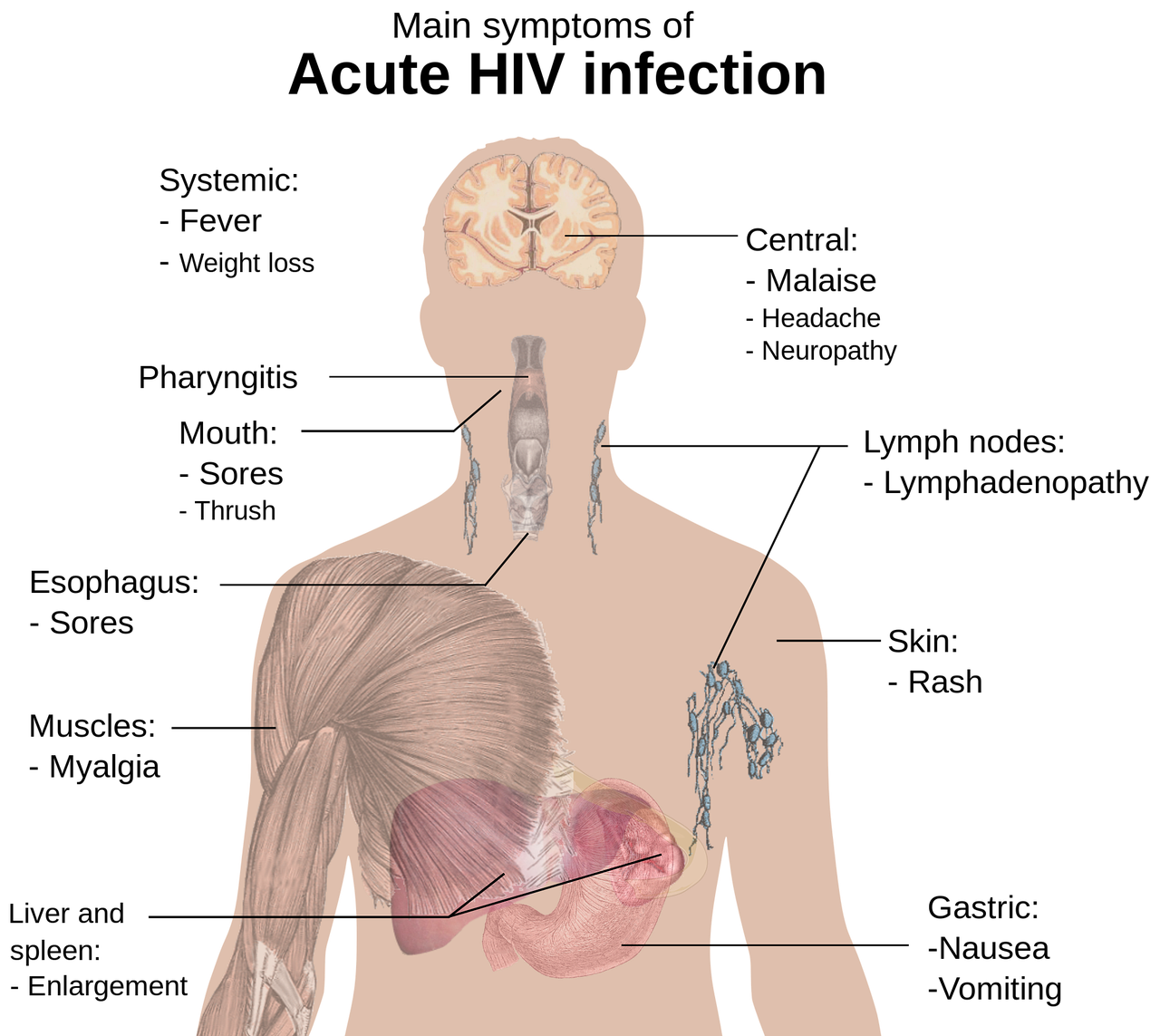
Reduced Productivity
In workplaces with inadequate air quality, employees may experience fatigue, reduced concentration and increased sick days. This can negatively impact productivity and well-being.
The quality of air in the workplace is a critical factor that can significantly influence the health, productivity and overall well-being of employees. Expanding on this idea, let’s delve into the wide-ranging effects of poor air quality in work environments:
Respiratory Issues: Inadequate air quality often contains pollutants like dust, allergens and volatile organic compounds (VOCs) that can irritate the respiratory system. Prolonged exposure may lead to conditions such as allergies, asthma or exacerbation of pre-existing respiratory problems, compromising employees’ lung health.
Fatigue and Reduced Focus: Poor air quality can contribute to feelings of fatigue and diminished concentration among employees. Breathing in polluted air can lead to a decrease in oxygen levels, impairing cognitive function and causing mental fatigue, which hinders productivity.
Increased Sick Days: A workplace with subpar air quality may see a rise in the number of sick days taken by employees. Exposure to airborne pollutants can weaken the immune system, making individuals more susceptible to illnesses like colds, flu and respiratory infections.
Decreased Productivity: Reduced focus and frequent sick days can have a direct impact on productivity levels. Employees working in an environment with poor air quality are likely to be less productive, which can lead to missed deadlines and lower work output.
Mental Health Impact: Long-term exposure to poor air quality can also affect mental health. It may contribute to stress, anxiety and overall feelings of discomfort, further impacting the well-being of employees.
Employee Retention: A workplace that neglects air quality may struggle with employee retention. Unhealthy indoor environments can lead to dissatisfaction among workers, prompting them to seek opportunities in healthier workplaces.
Legal and Regulatory Issues: In some regions, employers are legally obligated to provide a safe and healthy work environment. Neglecting air quality standards can lead to legal and regulatory challenges, potentially resulting in fines and damage to the company’s reputation.
Investment in Employee Well-being: Addressing air quality issues demonstrates a commitment to employee well-being. Providing a clean and healthy workspace can boost morale, job satisfaction and loyalty among employees.
To mitigate the adverse effects of poor air quality in the workplace, employers can take several proactive steps:
Regular Ventilation and Air Filtration: Implement effective ventilation systems and air filtration measures to reduce indoor pollutants and improve air circulation.
Monitoring and Maintenance: Regularly monitor air quality, conduct maintenance on HVAC systems and address issues promptly.
Education: Educate employees about the importance of air quality and encourage them to report any concerns.
Green Initiatives: Incorporate green building practices and use eco-friendly materials to reduce indoor pollutants.
Flexible Work Arrangements: Consider flexible work arrangements, such as remote work or flexible hours, to reduce the number of employees in the workspace and minimize air quality challenges.
By recognizing the profound impact of air quality on employee health, productivity and overall well-being, employers can make informed decisions to create healthier, more productive work environments, benefiting both the workforce and the organization as a whole.
To delve further into this matter, we encourage you to check out the additional resources provided here: Environmental Impact: Concept, Consequences, Measurement – PMC

Allergies and Skin Conditions
Contaminants in the air and environment can trigger allergies and skin conditions, causing discomfort and a diminished quality of life.
The impact of environmental contaminants on our well-being cannot be overstated. These invisible invaders in the air we breathe and the spaces we inhabit have the potential to wreak havoc on our health and overall quality of life.
Allergies, for instance, are often a direct response to these contaminants. Pollen, dust mites, mold spores and pet dander can trigger allergic reactions, leading to sneezing, itchy eyes and respiratory distress. Seasonal allergies, exacerbated by pollen and airborne allergens, can turn the joy of spring into a season of discomfort.
Moreover, contaminants can take a toll on our skin. Airborne pollutants and allergens can settle on the skin’s surface, potentially leading to irritation, redness and conditions like eczema. For individuals with sensitive skin, these irritants can be particularly troublesome, making proper skincare and hygiene routines even more critical.
But it’s not just allergies and skin conditions; contaminants can also have long-term health implications. Prolonged exposure to air pollution, for example, has been linked to respiratory diseases, cardiovascular problems and even cognitive decline. It’s a stark reminder that the air we breathe and the environment we inhabit are intricately linked to our overall well-being.
To mitigate the impact of environmental contaminants, there are several proactive measures we can take. Using air purifiers and ensuring proper ventilation in our homes can help reduce indoor air pollution. Regular cleaning and dusting can minimize the buildup of allergens. When outdoors, especially during high pollen seasons, wearing protective clothing and using antihistamines can provide relief from allergenic triggers.
Ultimately, understanding the relationship between contaminants and our health empowers us to make informed choices about our living spaces and daily routines. By taking steps to minimize exposure and practicing good hygiene, we can reduce discomfort, protect our skin and safeguard our long-term well-being. In a world where environmental challenges are ever-present, prioritizing our health and quality of life is a fundamental act of self-care.
Explore this link for a more extensive examination of the topic: The skin microbiome: impact of modern environments on skin …
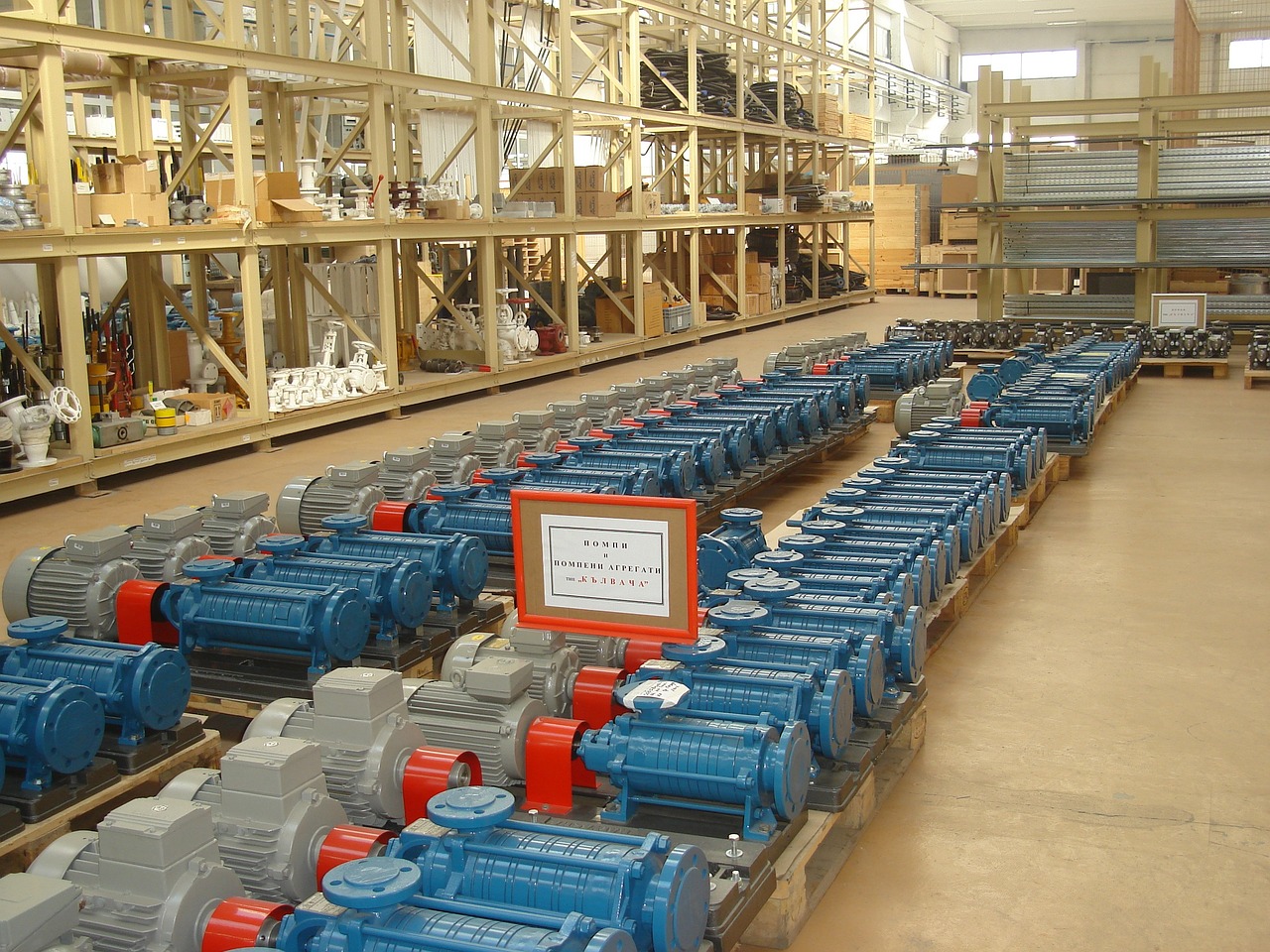
Vulnerable Populations
Infants, the elderly and individuals with compromised immune systems are at higher risk. Clean environments are crucial for their health and safety.
Certain demographic groups, including infants, the elderly and individuals with compromised immune systems, face unique vulnerabilities that demand special attention to their environment. In these cases, the maintenance of clean and hygienic surroundings takes on heightened importance due to the increased risk these individuals face. Here’s an extended look at why clean environments are pivotal for their health and safety:
1. Infants:
- Underdeveloped Immune Systems: Newborns and infants possess immune systems that are still developing. They are more susceptible to infections and illnesses, making it crucial to create a clean and hygienic environment around them.
- Limited Mobility: Infants spend most of their time indoors and have limited mobility. Their close proximity to their immediate surroundings means that the cleanliness of their environment has a direct impact on their health.
- Reducing Allergen Exposure: A clean environment is essential for minimizing exposure to allergens and irritants that can trigger respiratory issues or skin sensitivities in infants. Regular cleaning helps mitigate these risks.
2. The Elderly:
- Weakened Immune Systems: As individuals age, their immune systems often weaken. This decline in immunity makes the elderly more susceptible to infections, making a clean environment critical to their well-being.
- Frequent Health Concerns: The elderly are more likely to have chronic health conditions, which can be exacerbated by exposure to harmful germs or allergens. Cleanliness helps reduce the risk of complications from pre-existing health issues.
- Mobility and Safety: Clean and clutter-free environments are essential for preventing slips, falls and accidents, which can have severe consequences for the elderly.
3. Individuals with Compromised Immune Systems:
- Heightened Vulnerability: Individuals with compromised immune systems, such as those undergoing cancer treatments or organ transplants, are exceptionally vulnerable to infections. A clean environment is a critical line of defense against potentially life-threatening illnesses.
- Reducing Disease Transmission: In shared living spaces or healthcare facilities, individuals with compromised immune systems are at risk of disease transmission. Rigorous cleanliness and infection control measures are essential to protect these individuals.
- Stress Reduction: Maintaining a clean environment can help reduce stress and anxiety for those already dealing with health challenges. A clean, organized space contributes to a sense of comfort and well-being.
In summary, clean environments are paramount for the health and safety of infants, the elderly and individuals with compromised immune systems due to their heightened susceptibility to illnesses and complications. By ensuring that their surroundings are clean, allergen-free and safe, we can create supportive environments that promote their well-being, comfort and recovery. This commitment to cleanliness not only safeguards their health but also enhances their overall quality of life.
Should you desire more in-depth information, it’s available for your perusal on this page: Why cleaning the invisible in restaurants is important during COVID …

Air Purification
Invest in air purifiers with HEPA filters to reduce airborne pollutants. Ensure proper ventilation to maintain healthy indoor air quality.
Investing in air purifiers equipped with HEPA (High Efficiency Particulate Air) filters can significantly enhance the quality of the air you breathe indoors. However, this is just one piece of the puzzle when it comes to ensuring a healthy indoor environment. Here’s an extended perspective on why air purifiers and proper ventilation are essential for maintaining optimal indoor air quality:
1. Allergen Reduction: Air purifiers with HEPA filters excel at capturing tiny particles, including allergens like pollen, dust mites and pet dander. By reducing these common allergens in the air, you can breathe easier and experience fewer allergy-related symptoms.
2. Respiratory Health: Clean indoor air is especially important for individuals with respiratory conditions like asthma or allergies. HEPA filters in air purifiers trap airborne irritants, helping to alleviate symptoms and improve overall lung health.
3. Smoke and Odor Removal: HEPA-equipped purifiers are effective at removing smoke particles and odors, making them beneficial for households with smokers or cooking-related odors. This is crucial for maintaining a fresh and odor-free indoor environment.
4. Pathogen Control: Air purifiers can help reduce the concentration of airborne pathogens, such as viruses and bacteria. While they’re not a substitute for other preventive measures like vaccinations and handwashing, they can contribute to a healthier indoor space.
5. Chemical and VOC Reduction: Many indoor products release volatile organic compounds (VOCs) and harmful chemicals, contributing to poor air quality. Some air purifiers come with additional filters designed to absorb these pollutants, further improving the indoor environment.
6. Improved Sleep Quality: Clean air promotes better sleep. Air purifiers can help create a calm and allergen-free sleeping environment, leading to more restful and rejuvenating sleep.
7. Energy Efficiency: Modern air purifiers are designed to be energy-efficient, consuming minimal electricity while providing significant air quality benefits. This ensures that you can enjoy clean air without a substantial increase in energy costs.
8. Ventilation Synergy: While air purifiers effectively remove contaminants, proper ventilation complements their efforts. Ventilating your space by opening windows and using exhaust fans helps replace indoor air with fresh outdoor air, diluting pollutants and maintaining a balanced humidity level.
9. Consistency: Air purifiers work continuously to maintain air quality, ensuring that your indoor environment remains clean even when you’re not actively ventilating the space. This constant purification is especially valuable in areas with high pollution levels.
10. Long-Term Health Benefits: Investing in air purifiers and proper ventilation is an investment in your long-term health. Breathing clean indoor air reduces the risk of chronic respiratory issues, allergies and other health concerns associated with poor air quality.
In conclusion, combining air purifiers with HEPA filters and proper ventilation creates a comprehensive strategy for maintaining healthy indoor air quality. These measures work together to ensure that you and your family breathe clean, fresh air, promoting better overall health and well-being. Whether you’re concerned about allergies, respiratory conditions or simply creating a more comfortable living space, the investment in clean indoor air is a wise and beneficial choice.
If you’d like to dive deeper into this subject, there’s more to discover on this page: The Inside Story: A Guide to Indoor Air Quality | US EPA

Regular Cleaning
Clean and vacuum your home or workspace regularly to minimize dust and allergens. Use mold-resistant materials in moisture-prone areas.
Maintaining a clean and allergen-free environment is crucial for your health and well-being, whether it’s your home or workspace. Here’s a more comprehensive look at the importance of regular cleaning, dust control and the use of mold-resistant materials in moisture-prone areas:
Dust and Allergen Control: Dust is a common trigger for allergies and respiratory problems. Regular cleaning, including dusting and vacuuming, helps remove dust particles, pollen, pet dander and other allergens from surfaces and the air. This is particularly important for individuals with allergies or asthma, as it can significantly reduce symptoms and improve overall comfort.
Respiratory Health: Clean indoor air is essential for respiratory health. Dust and allergens can exacerbate conditions like asthma and chronic obstructive pulmonary disease (COPD). By minimizing these irritants through regular cleaning, you create a healthier indoor environment, allowing you to breathe easier and reducing the risk of respiratory flare-ups.
Enhanced Productivity: In a workspace, clean and organized surroundings can positively impact productivity. A clutter-free and dust-free environment minimizes distractions and helps employees focus on their tasks. It also promotes a sense of professionalism and pride in the workplace.
Reduced Risk of Illness: Dust can carry bacteria and viruses, increasing the risk of illness. Regular cleaning, especially in communal areas, reduces the likelihood of germs spreading. This is especially important during flu seasons or in shared workspaces to prevent the transmission of contagious illnesses.
Mold Prevention: Moisture-prone areas, such as bathrooms and basements, are susceptible to mold growth. Mold not only causes structural damage but can also lead to health issues. Using mold-resistant materials in these areas and maintaining low humidity levels through proper ventilation and dehumidification can prevent mold growth.
Long-Term Savings: Preventative measures like using mold-resistant materials and regular cleaning can save you money in the long run. Mold remediation and repairs due to moisture damage can be costly. By investing in prevention, you avoid these expenses and protect the value of your property.
Improved Indoor Air Quality: A clean environment contributes to better indoor air quality. This is essential for overall health and well-being, as we spend a significant portion of our time indoors. Improved air quality can lead to better sleep, increased energy levels and a general sense of comfort.
Eco-Friendly Practices: Using eco-friendly cleaning products and methods not only benefits your health but also the environment. Sustainable cleaning practices minimize the use of harmful chemicals and reduce the carbon footprint associated with cleaning routines.
Healthier Skin: Dust and allergens can settle on your skin and clothing, potentially leading to skin irritation or exacerbating skin conditions. A clean environment reduces your exposure to these irritants, promoting healthier skin and overall well-being.
Mental Well-being: A clean and organized space can have a positive impact on mental well-being. It promotes a sense of order, reduces stress and creates a pleasant and inviting atmosphere where you can relax and recharge.
In conclusion, regular cleaning, dust control and the use of mold-resistant materials in moisture-prone areas are essential practices for maintaining a healthy and comfortable living or working environment. These measures not only contribute to physical health but also enhance productivity, reduce the risk of illnesses and promote mental well-being. By prioritizing cleanliness and adopting preventative strategies, you create a space that supports your overall well-being and quality of life.
Looking for more insights? You’ll find them right here in our extended coverage: A Brief Guide to Mold, Moisture and Your Home | US EPA

Humidity Control
Maintain indoor humidity levels between 30% and 50% to prevent mold growth. Dehumidifiers can help in damp environments.
Maintaining the right indoor humidity levels, typically falling between 30% and 50%, is a crucial aspect of home maintenance that not only ensures comfort but also safeguards your health and property. One of the most significant threats associated with improper humidity levels is the growth of mold.
Mold can be a silent and insidious intruder, flourishing in areas with excessive moisture. When the indoor humidity is too high, it creates a favorable environment for mold spores to germinate and spread. Once established, mold can not only damage your home’s structural integrity but also pose health risks to you and your family, particularly for individuals with allergies or respiratory conditions.
To combat mold growth, it’s essential to monitor and control indoor humidity. Using a hygrometer can help you keep track of humidity levels and if they consistently exceed the recommended range, a dehumidifier can be your ally. Dehumidifiers work by extracting excess moisture from the air, thereby creating a less hospitable environment for mold to thrive. They are particularly effective in areas like basements, bathrooms and kitchens, which are more susceptible to dampness.
In addition to preventing mold, maintaining proper indoor humidity levels has a cascade of other benefits. It can improve indoor air quality, reduce the risk of dust mites and allergens and create a more comfortable living space. It can also protect your belongings, such as wooden furniture and musical instruments, from the detrimental effects of moisture.
Furthermore, controlling humidity is essential in regions with extreme weather conditions. During the winter, indoor heating can lead to low humidity levels, causing discomfort like dry skin and respiratory issues. Using a humidifier in such cases can add moisture to the air, creating a more pleasant living environment.
In summary, the control of indoor humidity levels is a key component of maintaining a healthy, comfortable and structurally sound home. It not only helps prevent mold growth but also contributes to overall well-being. By investing in tools like hygrometers and dehumidifiers and taking a proactive approach to humidity management, you can enjoy a more pleasant and healthier indoor environment.
For a comprehensive look at this subject, we invite you to read more on this dedicated page: Environmental Services | Background | Infection Control

Hand Hygiene
Continue to prioritize handwashing and personal hygiene, as they also contribute to a clean environment.
Continuing to prioritize handwashing and personal hygiene is not only essential for individual health but also has far-reaching benefits for the broader environment and community. Here’s how these practices contribute to a clean environment:
Preventing Disease Spread: Proper handwashing and personal hygiene practices are the first line of defense against the spread of infectious diseases. By minimizing illness and infections, these practices reduce the burden on healthcare systems and prevent the transmission of diseases within communities.
Community Well-being: A clean and healthy community is a more vibrant and productive one. When individuals maintain good personal hygiene, they contribute to the overall well-being of their neighborhoods and cities. Fewer sick days mean that schools, workplaces and businesses can function optimally.
Reducing Antibiotic Resistance: Improved personal hygiene can reduce the need for antibiotics. Overuse of antibiotics contributes to antibiotic resistance, a global health threat. By practicing good hygiene, individuals can help mitigate this problem and ensure that antibiotics remain effective for future generations.
Environmental Impact: Handwashing and personal hygiene also have environmental implications. Excessive use of antimicrobial products can result in the release of chemicals into the environment, potentially affecting aquatic ecosystems and water quality. Prioritizing handwashing with plain soap and water is eco-friendly and effective.
Educational Opportunities: Promoting personal hygiene in communities often involves educational initiatives. These programs not only improve hygiene practices but also provide opportunities for individuals to learn about environmental stewardship and sustainability.
Behavioral Change: Emphasizing personal hygiene can lead to positive behavioral changes beyond just handwashing. People who prioritize cleanliness often adopt other sustainable habits, such as proper waste disposal and conservation efforts.
Social Responsibility: Practicing good personal hygiene is a form of social responsibility. It reflects an individual’s commitment to the well-being of their community and the environment. This sense of responsibility can inspire others to follow suit, creating a culture of cleanliness and care.
Emergency Preparedness: During crises like disease outbreaks or natural disasters, the importance of personal hygiene becomes even more evident. Communities that have already embraced good hygiene practices are better prepared to handle emergencies and maintain sanitary conditions.
In conclusion, the impact of personal hygiene extends well beyond the individual. It influences the health and vitality of entire communities and contributes to a clean and sustainable environment. Prioritizing handwashing and personal hygiene is not just a personal choice; it’s a collective responsibility with far-reaching implications for public health, environmental well-being and community resilience.
You can also read more about this here: A Brief Guide to Mold, Moisture and Your Home | US EPA
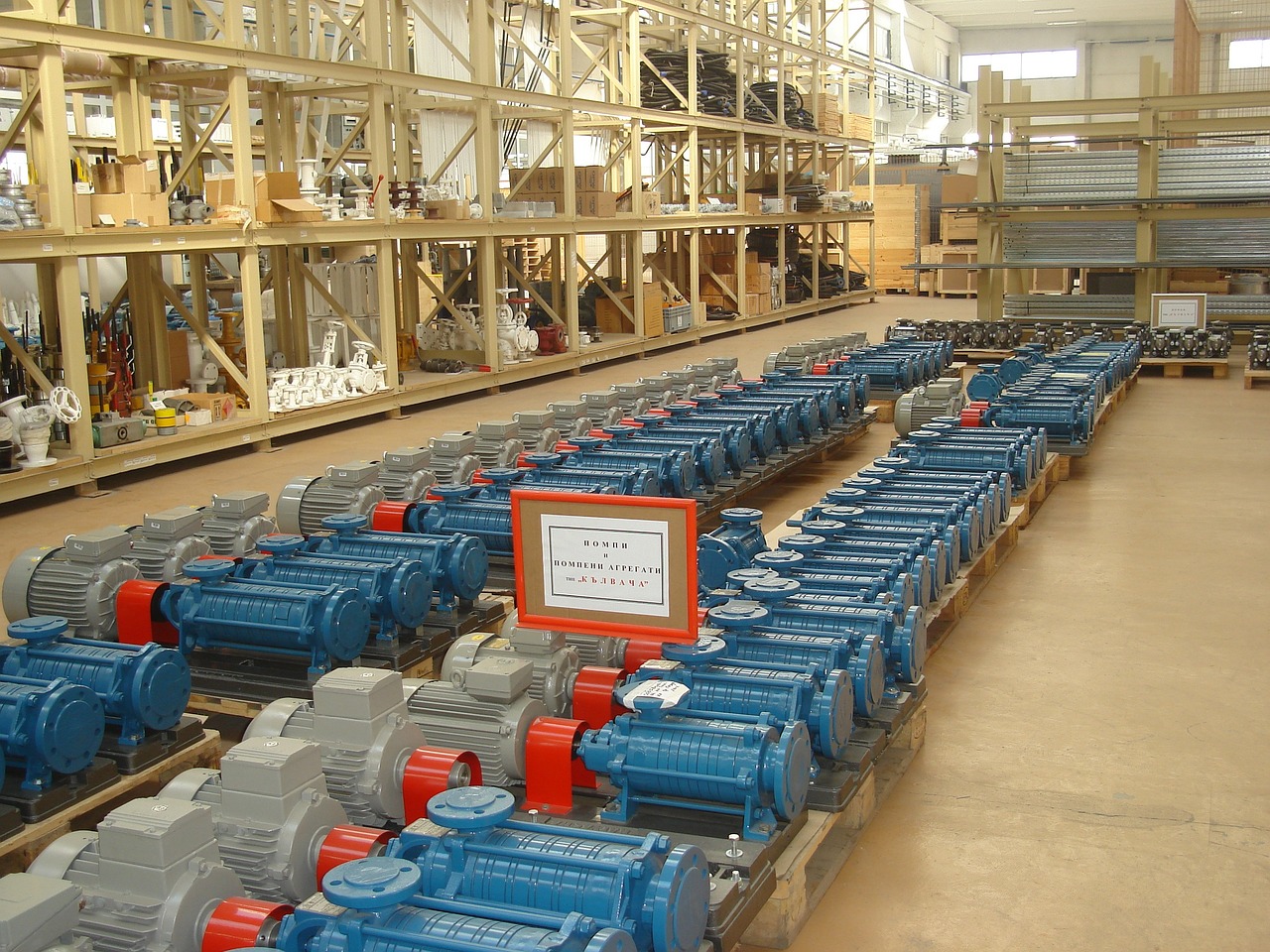
Professional Inspections
Periodic inspections for mold, lead, asbestos and other potential hazards are essential, especially in older buildings.
Periodic inspections for potential hazards in buildings, especially older ones, are a crucial part of maintaining a safe and healthy environment. Expanding on this idea sheds light on the importance of these inspections, the potential risks they mitigate and the broader implications for building safety:
1. Protecting Occupant Health:
Periodic inspections are primarily focused on safeguarding the health and well-being of those who live or work in the building. In older structures, the presence of mold, lead, asbestos or other hazardous materials can pose significant health risks when they deteriorate or are disturbed. Inspections help identify these dangers early, allowing for prompt remediation.
2. Addressing Environmental Concerns:
Older buildings may have been constructed using materials and practices that are now considered harmful to both health and the environment. Asbestos, for example, is known to cause respiratory issues and is a hazardous waste when it needs removal. Conducting inspections helps identify environmental concerns and ensures that necessary precautions are taken.
3. Legal Compliance:
In many regions, there are laws and regulations that require periodic inspections and remediation of hazardous materials in buildings. Non-compliance can lead to legal consequences, fines or even building closures. Regular inspections help building owners and managers adhere to these regulations, maintaining legal compliance and avoiding potential liabilities.
4. Preservation of Historical Buildings:
Periodic inspections are especially important for historical buildings, as they often have unique architectural features and materials that require special care. Ensuring the safety and integrity of these structures allows for their preservation and continued use, contributing to the cultural heritage of a community.
5. Ensuring Structural Integrity:
In addition to hazardous materials, inspections can also uncover structural issues that may compromise the safety of a building. Cracks, foundation problems and structural damage can be addressed before they become more significant and costly concerns.
6. Long-Term Cost Savings:
While inspections come with a cost, they can lead to long-term savings. Identifying and mitigating issues early prevents them from escalating into more extensive and expensive problems. It’s an investment in the longevity and sustainability of a building.
7. Promoting Public Trust:
Building inspections and adherence to safety standards help build public trust. Whether it’s a residential complex or a public facility, knowing that regular checks are conducted to ensure safety fosters confidence among occupants and visitors.
8. Insurance Considerations:
Insurance companies often require evidence of inspections and maintenance to provide coverage. By fulfilling these requirements, building owners can ensure they have adequate insurance protection in case of unforeseen events or accidents.
9. Potential for Renovation and Upgrades:
Identifying and addressing hazardous materials or structural issues can open the door to renovation and modernization projects. These improvements can enhance the overall quality, functionality and value of a building.
In summary, periodic inspections in older buildings are a proactive and responsible approach to ensuring safety, preserving historical structures and maintaining legal compliance. They protect occupant health, the environment and the long-term financial sustainability of a property. Regular inspections not only address existing hazards but also pave the way for the continued use, renovation and enhancement of buildings that hold cultural and historical significance within their communities.
You can also read more about this here: Environmental health
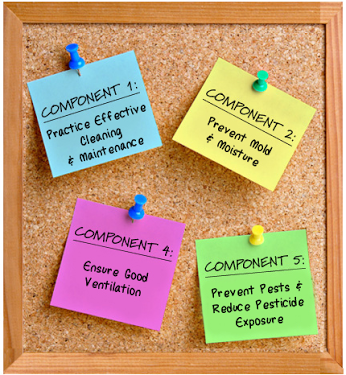
Education and Awareness
Promote awareness of invisible hygiene among family members, colleagues and peers. Encourage responsible habits and hygiene practices.
Promoting awareness of invisible hygiene among family members, colleagues and peers is not only an act of responsibility but also a means of fostering a healthier and more considerate community. Here’s an extended exploration of why spreading awareness and encouraging responsible habits and hygiene practices is essential:
Collective Responsibility: Invisible hygiene is a shared responsibility that extends beyond individual actions. When you promote awareness among your social circles, you contribute to the collective well-being of your family, colleagues and peers. Everyone benefits from a clean and health-conscious environment.
Disease Prevention: Raising awareness about invisible hygiene can play a crucial role in disease prevention. By educating others about the importance of clean surroundings and indoor air quality, you empower them to take preventive measures, reducing the risk of illnesses that can be caused or exacerbated by poor hygiene.
Behavioral Change: Awareness campaigns can inspire behavioral change. When individuals understand the potential health risks associated with neglecting invisible hygiene, they are more likely to adopt responsible habits. This, in turn, leads to cleaner and safer environments for all.
Education: Spreading awareness provides an educational opportunity. Many people may not fully grasp the significance of invisible hygiene until it’s explained to them. By sharing knowledge and resources, you empower others to make informed decisions about their living and working spaces.
Community Health: A community that prioritizes invisible hygiene is a healthier one. By encouraging responsible practices within your community, you contribute to an environment where people are less likely to fall ill due to preventable hygiene-related issues.
Positive Peer Influence: When you lead by example and advocate for invisible hygiene, you become a positive peer influencer. Your actions and words inspire those around you to follow suit, creating a ripple effect of responsible hygiene practices.
Safety in Shared Spaces: In shared spaces like workplaces and public areas, collective awareness of invisible hygiene is crucial. Encouraging colleagues and peers to maintain clean and safe environments enhances the well-being and comfort of everyone who uses these spaces.
Reduced Environmental Impact: Responsible hygiene practices often align with sustainability. Educating others about eco-friendly cleaning products, energy-efficient ventilation systems and waste reduction contributes to a greener and more environmentally conscious community.
Enhanced Quality of Life: A community that values invisible hygiene experiences an improved quality of life. Cleaner and healthier environments lead to less stress, better mental well-being and fewer instances of illness, allowing individuals to lead more fulfilling lives.
Preparedness for Emergencies: When people are aware of the importance of invisible hygiene, they are more likely to be prepared for emergencies, such as disease outbreaks or natural disasters. They understand the significance of maintaining cleanliness and air quality, even in challenging circumstances.
In conclusion, promoting awareness of invisible hygiene is an act of responsibility that benefits individuals and communities alike. By encouraging responsible habits and hygiene practices among family members, colleagues and peers, you contribute to a healthier, safer and more environmentally conscious world. It’s a collective effort that can lead to lasting positive change and an improved quality of life for everyone involved.
Explore this link for a more extensive examination of the topic: Household air pollution

Invisible hygiene is a critical aspect of overall well-being that should not be underestimated. The air we breathe and the cleanliness of our surroundings profoundly affect our health, comfort and productivity. By taking proactive steps to ensure clean indoor environments and high air quality, we can safeguard our health and create spaces where we can thrive, even when the threats are invisible to the naked eye.
“Invisible hygiene is an indispensable facet of our well-being, often overlooked but deserving of our utmost attention. The invisible elements that shape our living and working environments have a profound and lasting impact on our overall health, comfort and productivity. Recognizing the significance of these unseen factors and taking proactive measures to address them is pivotal for safeguarding our well-being and nurturing spaces that allow us to flourish, even in the face of hidden threats that elude our naked eye.
Health and Vitality: The quality of the air we breathe, both indoors and outdoors, is paramount to our health. Invisible pollutants, allergens and toxins in the air can affect our respiratory system, provoke allergies and even lead to more severe health issues. By prioritizing indoor air quality, such as proper ventilation, air purification and the removal of indoor pollutants, we invest in our long-term well-being.
Comfort and Serenity: Invisible hygiene also influences our daily comfort and sense of serenity. Unseen irritants like dust mites, mold spores and electromagnetic radiation can disrupt our peace of mind and overall comfort. Creating spaces free from these hidden stressors fosters a sense of tranquility and emotional well-being.
Productivity and Performance: In work environments, invisible factors such as indoor lighting quality and ergonomic design can significantly impact productivity and job satisfaction. Ensuring that these hidden elements are optimized can elevate our performance and enhance our overall work experience.
Safety and Longevity: Concealed threats, like unseen contaminants in our drinking water, can pose risks to our safety and longevity. Regular testing and filtration systems can provide peace of mind by ensuring that the water we consume is free from harmful, invisible pollutants.
Sustainability: Invisible hygiene also intersects with sustainability. Energy-efficient, eco-friendly building materials and practices contribute to a healthier living environment while reducing our ecological footprint. These hidden choices have visible impacts on both our immediate well-being and the health of our planet.
Mental and Emotional Well-Being: The invisible realm extends to our mental and emotional health, encompassing factors like stress, lighting and interior design. Thoughtfully designed spaces that support our mental and emotional needs can lead to increased happiness and reduced stress, even if we can’t see these influences directly.
By embracing the importance of invisible hygiene, we acknowledge that our well-being is intricately tied to our surroundings. It’s about taking deliberate, informed actions to create environments that promote health, comfort and productivity. In doing so, we empower ourselves to thrive and lead fulfilling lives, even in the presence of threats that remain hidden to our eyes. In this pursuit, we foster a healthier, happier and more sustainable world for ourselves and future generations.”
You can also read more about this here: Environmental Cleaning for the Prevention of Healthcare-Associated …
More links
Explore this link for a more extensive examination of the topic: Indoor Air Quality
